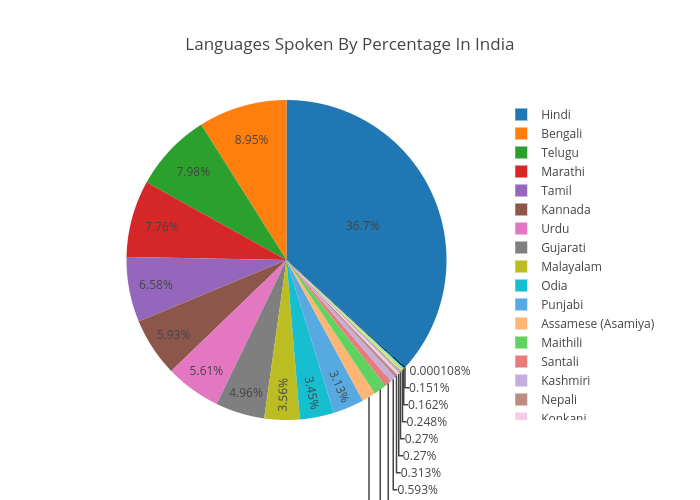
In India, when one says “हिंदी में अनुवाद” (translate in Hindi), it unlocks a world filled with rich history, culture, and emotions. Hindi, like English, Spanish, French, and numerous other languages, has its unique charm. But what sets Hindi apart in the realm of translation? Learn all there is to know about how to translate in Hindi in this comprehensive guide.
The rich tapestry of the Hindi language
Delve into India, and you’d encounter Hindi not as just a language, but as a story that has been woven over centuries. The Roots and Origin of Hindi can be traced back to Sanskrit. Over time, it has embraced words from various languages like Arabic, Persian, Turkish, and even Portuguese.
Hindi Today is not confined to just India. Thanks to Bollywood and a vast diaspora, it stands tall among the world’s most spoken languages, alongside Chinese, Russian, and English.
The art of translation
For someone who has tried using google translate or Microsoft’s translation tools, it’s clear that Beyond Just Words, translation dives deep into the fabric of culture and emotion. Especially in Hindi translation, where a simple “नमस्ते” can mean a casual hello or a deep-rooted sign of respect, depending on context.
Translating between languages, say, from Hindi to English or Hindi to French, poses Common Challenges. The reason being, every language, whether it’s Tamil, Telugu, Marathi, or even Japanese, carries its unique essence. Direct translations often lead to humorous or serious misinterpretations.
The digital age and Hindi translation
Gone are the days when dictionaries between Hindi and Urdu or Hindi and Punjabi were the sole tools. Now, the Tech to the Rescue involves AI and APIs aiding in language translation. These machine translation tools like google translate can provide a text translation from Hindi to languages as diverse as Korean, Vietnamese, or even Norwegian in seconds.
However, Accuracy vs Authenticity remains a debate. While online translation tools can convert Hindi text to Italian, Thai, or German swiftly, can they capture the essence? For instance, translating the intricate nuances of a Hindi proverb into Polish or Greek might not resonate as it does in its native tongue.
5 best online translation tools: A detailed review
1. Google Translate
Arguably the most well-known name in the world of online translation, Google Translate has come a long way since its inception. Supporting over 100 languages, this tool caters to millions globally.
Google Translate uses a powerful combination of machine learning and vast linguistic databases. Its strength lies in its simplicity, offering users an easy-to-navigate interface. Its ‘conversation mode’ facilitates real-time bilingual conversations. Additionally, the camera scan feature is a boon for travelers, allowing for instant translation of text from images. However, while great for general translation tasks, it sometimes misses nuanced cultural context, making certain translations feel mechanical.
2. Microsoft Translator
A significant player in the translation space, Microsoft Translator is another versatile tool supporting text, voice, and image translations across multiple devices.
Integrating seamlessly with other Microsoft applications like Office and Skype, this tool offers collaborative features for real-time multilingual group chats. Its API is often lauded for easy integration into custom applications, websites, or tools. One major perk is its offline mode, which allows for translations without internet access. However, much like Google Translate, while it’s versatile and robust, it might occasionally miss out on some linguistic subtleties.
3. Speechify AI Dubbing
Moving beyond traditional text translations, Speechify AI Dubbing brings a revolution in the audio translation sphere.
Speechify focuses on audio content, making it unique. It’s not just about translating text; it’s about giving it a voice in a different language. The AI-driven dubbing ensures audio content like podcasts, documentaries, and video lessons are accessible to a global audience. Their tool understands contextual nuances, offering a more natural-sounding output compared to many competitors. The primary limitation is that its main focus is on audio, making it less versatile for those seeking text-only translation solutions.
4. DeepL Translator

A relative newcomer, DeepL has quickly gained respect in the linguistic community for its deep learning algorithms that often produce translations of superior quality.
DeepL currently supports fewer languages compared to giants like Google and Microsoft. However, where it shines is the quality of translations, especially for European languages like German, French, and Spanish. The tool has a knack for understanding context, making translations sound more native. The Pro version offers enhanced security and the possibility to integrate the DeepL API into other applications or platforms.
5. Duolingo Phrasebook
From the makers of the popular language-learning app Duolingo, the Phrasebook is a handy tool for travelers and those seeking quick and easy translations for common phrases.
The Duolingo Phrasebook, unlike other expansive tools, focuses on practicality. It’s designed for real-life situations, offering translations for commonly used phrases across various scenarios – be it dining, travel, emergencies, or social conversations. The translations are vetted by a community of language enthusiasts, ensuring accuracy and relevance. Its main drawback is its limited scope, as it’s not suitable for extensive text translations or professional needs.
Case studies: translation triumphs and tragedies
The beauty of Hindi translation shines in Success Stories where movies and literature have reached global audiences. Bollywood movies, although primarily in Hindi, have been translated to Arabic, Russian, and even Japanese, making them a hit in different countries.
On the flip side, Lost in Translation moments are aplenty. A Hindi phrase might sound poetic, but when translated to Spanish using a standard translation service, it could become a funny or out-of-place remark. These instances highlight the need for human touch over relying purely on machine translation.
Cultural nuances in Hindi translations
In the world of translation, understanding Proverbs and Idioms is paramount. Just as “breaking a leg” in English doesn’t involve any actual breaking, Hindi too has its share of idioms that don’t directly translate well into languages like Dutch, Ukrainian, or Bengali.
Media and Entertainment play a pivotal role in shaping these translations. Today, a Bollywood song might be popular in its original Hindi version, but with subtitles in Telugu, Malayalam, or even French, it reaches a broader audience, helping bridge cultural gaps.
Future of Hindi translations
In this age of globalization, Emerging Trends in translation tools aim to connect Hindi with languages as diverse as Indonesian, Filipino, Czech, and Romanian. With growing API integrations, even regional languages like Bengali, Gujarati, and Kannada can now be translated to international ones like Chinese or French more seamlessly.
Yet, The Human Touch remains irreplaceable. Machines might give you a clear text translation, but humans ensure it resonates. For as long as there’s poetry in Hindi or any different language like Hebrew, Danish, or Catalan, human translators will always be in demand, ensuring the soul of the text isn’t lost in translation.
Thus, when someone says “translate in Hindi”, it’s a journey across cultures, continents, and contexts. While tools like Google Translate make the process easier, it’s the human element that ensures the heart of the language remains beating, be it in हिंदी or any other tongue across the globe.
Exploring Speechify AI Dubbing for Hindi translations
Ever wondered how technology can revolutionize Hindi translations in the audio-visual world? Enter Speechify AI Dubbing! As we’ve seen with text translations, capturing the essence of a language is vital. Speechify’s advanced AI Dubbing seamlessly blends Hindi’s rich tapestry of sounds with movies, series, or any video content. No longer rely on just subtitles; experience content in its true audible glory. Now, doesn’t that sound like music to your ears? Dive deep into the world of accurate and emotional translations with Speechify. Try Speechify AI Dubbing today and feel the difference!
FAQs

1. Why is human translation still considered superior to machine translation for Hindi and other languages?
While machine translation tools, such as Google Translate, offer quick and clear text translations across multiple languages, they often fail to capture the cultural nuances, emotions, and context-specific meanings. Human translators, on the other hand, have a deep understanding of idiomatic expressions, proverbs, and the cultural essence of the language, ensuring that translations resonate authentically with the target audience.
2. How do Bollywood movies play a role in popularizing the Hindi language internationally?
Bollywood movies, primarily in Hindi, have found audiences globally thanks to translations and subtitles in various languages like Arabic, Russian, and Japanese. By translating these movies into different languages, they reach a broader audience, bridging cultural gaps and introducing non-Hindi speakers to the beauty and richness of the Hindi language and Indian culture.
3. What are some challenges faced when translating Hindi proverbs and idioms into other languages?
Hindi proverbs and idioms, much like those in other languages, are deeply rooted in the culture and history of the region. Direct translations of these expressions into other languages might not convey the intended meaning and can sometimes sound out of place or even humorous. For instance, an English idiom like “breaking a leg” has a specific cultural meaning that doesn’t involve literal breaking, and similarly, Hindi has its share of idioms that might not resonate the same way when directly translated.
